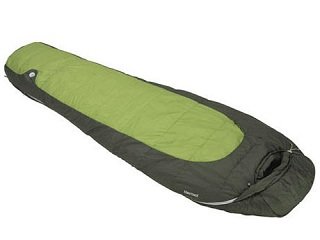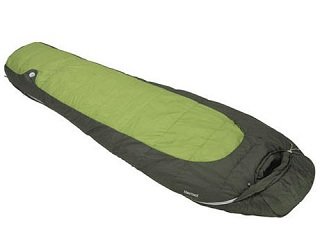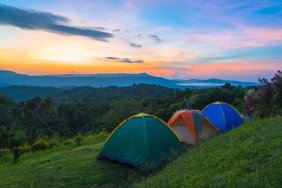 When it comes to backpacking and camping, space is a big issue and with every inch that is occupied, you need to make sure that you’re occupying it with the proper gear for your purposes. Quality gear isn’t cheap and it’s always easier to get the right item on the first trip to the store, rather than be uncomfortable on your trip and then try to return it after the fact. One of the most important items when hiking or camping is your sleeping bag, which, if you choose the wrong one, can mean the difference between a good trip and a horrible one. Below, you’ll find a brief guide to choosing the right sleeping bag for your needs, based on the three basic elements of sleeping bags: temperature rating, overall design, and insulation material.
When it comes to backpacking and camping, space is a big issue and with every inch that is occupied, you need to make sure that you’re occupying it with the proper gear for your purposes. Quality gear isn’t cheap and it’s always easier to get the right item on the first trip to the store, rather than be uncomfortable on your trip and then try to return it after the fact. One of the most important items when hiking or camping is your sleeping bag, which, if you choose the wrong one, can mean the difference between a good trip and a horrible one. Below, you’ll find a brief guide to choosing the right sleeping bag for your needs, based on the three basic elements of sleeping bags: temperature rating, overall design, and insulation material.
The temperature rating of the sleeping bag you choose will most likely vary, depending on the following: where you live and where you camp most. If you’re the type of outdoorsman who frequents their local region, then you’ll want to match your sleeping bag with your local climate. However, if you’re the type to hop on a plane and go on week-long expeditions, then it might be best to invest in a multi-temperature lifestyle. Either way, it’s always good practice to go with a bag suited to handle the coldest temperatures you’ll be experiencing. The rating will often be displayed on the price tag, or even on the bag itself. For example, a bag with a +30 rating is rated to a minimum temperature of 30 degrees Fahrenheit.
For consistently warmer climates, or summer trips, a bag with a rating of +35 or higher is a good choice. Cooler weather will require a bag with a rating between -10 and +10. Winter conditions will require a bag with a rating of -10 or below. A good all-around, three-season, bag will have a rating between +10 and +35. Keep those ratings, as well as your destination’s coldest temperatures, in mind when choosing a sleeping bag.
For some, when it comes to the desired overall design of their sleeping bag, there is a toss-up between weight and space. Some prefer the lightest bag possible, to ensure that the hike itself is comfortable. While others argue that a good night’s sleep, due to a roomy bag, is more important. It’s really up to you, though, in my opinion, most sleeping bags do a good job of offering the best of both worlds.
Lastly, you’ll want to consider the insulation of the sleeping bag, which breaks down into down or synthetic fill. Down-filled bags tend to be more lightweight, breathable, and easily compactible, and, while more expensive, they last longer. Synthetic bags do well in cooler conditions where water is also a threat, and excel at trapping body heat.
Sleeping bags are where you’ll be sleeping after a long day on the trail, so choosing the right one for your needs is a crucial step in the trip. I suggest visiting a company’s website and reading the customer reviews of each model, making sure to note any common complaints, as these are design flaws most likely. If you can find one that can be used in a variety of conditions and feels right for you, then go with it. After all, at the end of the day, it’s you who’ll be using it, so your opinion is the one that matters.








